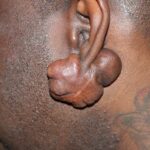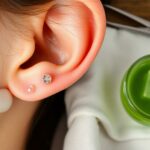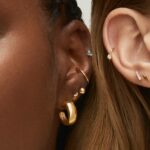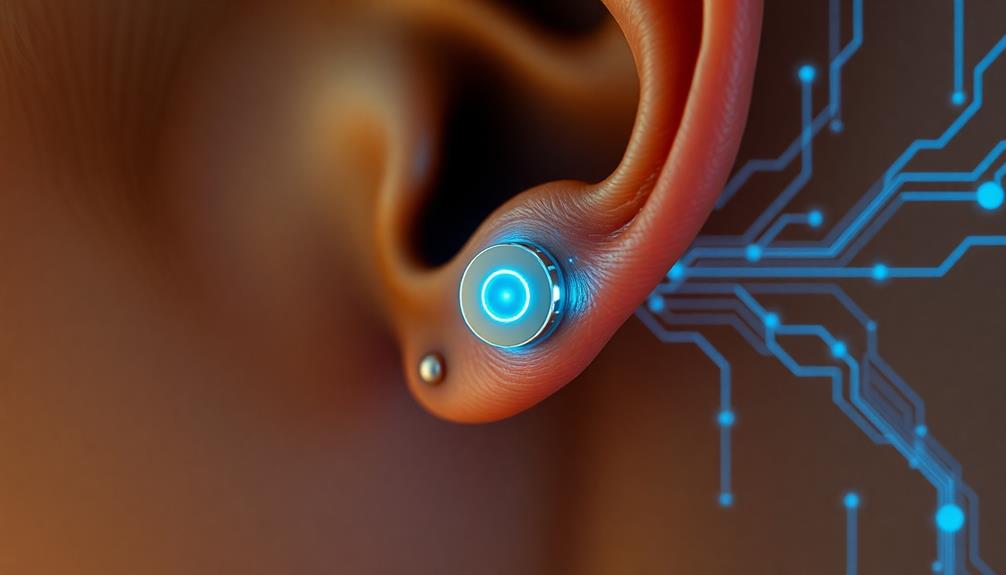
There are several options for treating keloids caused by piercings. The most important thing is to prevent the problem from getting worse. You can use silicone sheets, hydrogen peroxide, or consider laser treatment to clean the keloid area. These methods help minimize concerns about future piercings.
Avoid tattoos, piercings, and laser procedures to keloids
Your skin can look unattractive if you have a tattoo, piercing or laser procedure for Keloids. If you’re at risk of developing keloids, you should avoid these procedures. You should also tell your doctor about any scars you have. Your doctor can help you reduce your risk.
Keloids are large, raised scars that form after skin injury. They can occur on any part of the body, but they typically form on the ears, shoulders, and chest. They can grow for many years and may even outgrow the original injury. They can feel sensitive, itchy, or painful.
Keloids are not considered cancerous. However, the scars can be disfiguring and can have emotional effects. Having a keloid can limit your daily activities. The scar may also prevent you from moving certain joints, such as the ankles and elbows.
Although surgery can remove keloid scars, some treatments take time. The procedure may require you to pay out-of-pocket. You may be eligible for partial reimbursement by your insurance company. However, it is important to verify with your provider before you undergo any procedure.
You may need multiple treatments depending on the severity of your keloid. There are many treatments available, including corticosteroid shots and extreme cold therapy. Some treatments work by flattening the keloid, while others reduce redness.
The best way to prevent keloids is to avoid any skin injuries. To prevent keloids from developing, avoid any skin injuries, such as a piercing of the ears.
You should also keep your skin protected from the sun. This can prevent the scar from getting darker than the rest of your skin.
Talk to your doctor if you are considering getting a tattoo or piercing. If you have a family history, you may be more at risk for keloid.
If you’re having a tattoo or piercing, you should inform your provider about any previous scars. It is important that your skin does not become inflamed during the procedure.
Hydrogen peroxide
Using hydrogen peroxide to get rid of keloids is not the most effective method. However, it can help to sooth piercings and bumps. It can also be used to reduce swelling.
If you’re experiencing pain or swelling, it’s time to visit a dermatologist. He or she can advise you on how to clean the area. In addition, your doctor may prescribe topical antibiotics or oral antibiotics.
A yellowish-colored bump could indicate an infection. You can treat the infection by soaking the affected area in sterile saline solution. This should be available at any pharmacy. Then rinse the area with warm running water.
In addition, you can apply a thin layer of baking soda to the area. Baking soda can exfoliate the skin and reduce swelling. You can also mix baking soda with hydrogen peroxide to form a paste. Apply it to the affected areas with a cottonball. Baking soda and hydrogen peroxide can also be helpful in reducing inflammation.
Another way to get rid of keloids is to apply tea tree oil. This oil is antibacterial and can help heal the wound. The oil can be used twice daily, once before bed and again in the morning. You can also massage the area with honey. This will help to speed up the healing process and prevent dead cells from accumulating over the scar tissue.
Lemon juice can also be applied directly to the area. Lemon juice has antioxidant properties and can help to reduce inflammation. You can also apply it to the area for a few minutes.
Aloe leaf gel is also a good treatment option for keloids. Aloe has anti-inflammatory properties and can help to heal the wound. You can also apply aloe gel to the affected area twice a day.
Colloidal silver can be used to help reduce inflammation and improve your immune system. It can also be used to treat acne. You can buy it at your local pharmacy or on Amazon. It’s yellow and should be applied twice a day.
Silicone sheets
Getting rid of keloids from piercings with silicone sheets is not an exact science. There are many options. These include pressure dressings and topical silicone products. The best treatments work by preventing the growth of keloids and also by reducing the size of existing scars.
Wearing a silicone sheet for several months over the affected area is a great way to eliminate keloids caused by piercings. This will allow the wound to heal faster and may reduce scarring after surgery.
Other treatments include injections of corticosteroids, which may be uncomfortable and can lead to atrophy of the affected skin. Some patients also choose to wear pressure dressings to reduce blood flow to the affected area. This should be done in accordance with manufacturer’s instructions.
You can also use an over-the-counter treatment, such as a cold compress. This is effective in reducing the size and appearance of keloids. It is also effective at easing the symptoms of itchiness.
High-energy beams of light can also be used to heal scarring. Although it is not a cure all, it can help get things moving.
To reduce keloids, a topical silicone product is a good option, especially if they are caused by scarring or burns. These products come in gels and adhesive sheets. They can also be used by anyone of any age.
The best way to get rid of keloids from ear piercings is to prevent them from forming. The best way to do this is to avoid irritating the affected area.
In addition, it is important to use proper wound care. This includes keeping the area clean and dry. Proper wound care is essential to prevent infection. Infected wounds may require antibiotics to be treated.
It is best to consult your health care provider for the best way to get rid of keloids. You may want to cover the affected area with a silicone sheet for several months. A pressure dressing can also be used to reduce blood flow.
Hi, my name is Danielle, and I’m an author for piercings-body.com. I have a passion for writing and love to share my knowledge on all things body piercing-related. I’m also a huge advocate for safe body modification practices and believe everyone should be able to make informed decisions about their bodies. When I’m not writing or blogging, I enjoy spending time with my family and friends, practicing yoga, and exploring new places.

















